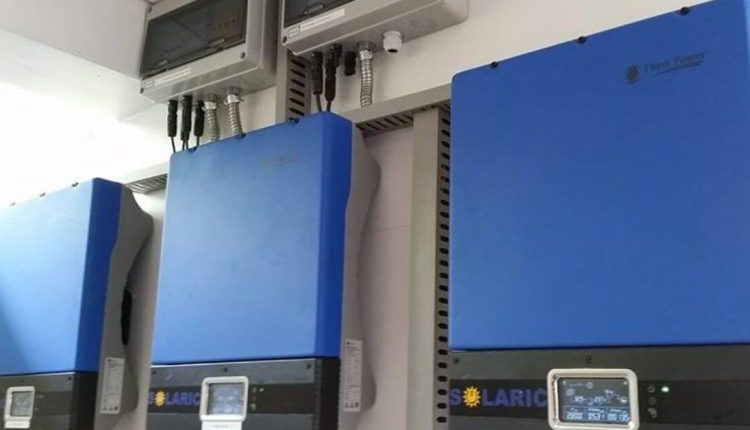Types of Solar Inverters
What are the types of solar inverters?
- String inverters
- Micro inverters
- Power optimizers
Overview
- Solar inverters are essential for converting direct current (DC) from solar panels into usable alternating current (AC)
- There are three main solar inverters: String inverters perform centralized DC-to-AC conversion, which is cost-effective for residential use but susceptible to shading impact. Microinverters conduct local DC-to-AC conversion on each panel, maximizing efficiency and suitable for complex roofs and commercial spaces.
- Power optimizers optimize panel voltage before central AC conversion, enhancing performance in shaded conditions.
Selecting the appropriate inverter is crucial for maximizing energy production and system efficiency.
Solar panels are commonly viewed as the most crucial component of a solar power system, as they directly capture sunlight. However, a fully functional power system involves several key elements beyond just the panels. Once sunlight is captured, it needs to be converted into usable electrical energy, which is the role of solar inverters.
This article will delve into the essential function of inverters. We will define what they are and explore the three main types of solar inverters available on the market.
What Is a Solar Inverter?
Solar inverters are the silent workhorses of a solar power system. They take the direct current (DC) electricity generated by solar panels, which isn’t compatible with our homes, and convert it into usable alternating current (AC) that powers our lights, electronics, and appliances. They bridge the gap between the raw power produced by the panels and the electricity that runs our lives.
There are three main types of solar inverters available, each with its own set of pros and cons. Understanding these options is crucial for choosing the best solar system to fit your specific needs.
What Are the Types of Solar Inverters?
Inverters are the brain of your solar system, converting solar power into usable electricity. Choosing the right inverter ensures you fully benefit from your investment in solar energy.
String Inverters
String inverters are a well-established and dependable technology in solar power systems. They consist of a single centralized unit that converts the DC electricity generated by multiple solar panels into AC power. This straightforward design makes string inverters cost-effective and a popular choice for residential installations with consistent, unobstructed sunlight. For example, in a typical suburban home with a roof free from shading, string inverters effectively manage power from a series of panels.
However, string inverters can face performance issues if any panel in the series is shaded, as this can affect the entire system’s efficiency. This limitation becomes evident in environments with varying sunlight exposure, where string inverters may not always optimize energy production.
Understanding the limitations and benefits of string inverters is essential for making informed decisions about your solar power system. This knowledge helps in selecting the most suitable technology that aligns with your specific energy needs and environmental conditions.
Micro Inverters
Unlike traditional inverters, microinverters are compact units attached directly to each solar panel. This translates to DC to AC conversion happening right where the power is generated. This localized approach maximizes efficiency by ensuring each panel performs independently. Shading, debris, or even panel failure on one section won’t drag down the entire system’s output.
The benefits of microinverters extend beyond just efficiency. They offer detailed performance monitoring, allowing for fine-tuned system operation. Additionally, microinverters provide greater flexibility in system design, making them ideal for complex roof layouts or areas prone to shading.
This is particularly relevant for commercial spaces like office buildings, retail stores, and warehouses where roof structures or equipment might cast shadows. By optimizing energy capture and providing precise monitoring, microinverters ensure businesses get the most out of their solar investment.
Power Optimizers
Power optimizers blend the benefits of string and micro-inverters, offering a hybrid solution. Each panel is equipped with an optimizer that first optimizes the panel’s voltage. This optimized voltage is then sent to a central conversion station, which converts the DC electricity into AC power.
In educational institutions, where solar panels are often placed on varied roof sections and exposed to different shading conditions, power optimizers ensure that each panel performs efficiently regardless of its specific environment. This enhances overall energy production and system reliability. Additionally, power optimizers provide detailed performance data, which is valuable for effective monitoring and maintenance.
Considering power optimizers for your solar system is particularly important in settings with diverse and challenging conditions. Their ability to manage and optimize the output of each panel individually can lead to more consistent and higher overall energy yields, making them a smart choice for ensuring the long-term efficiency and effectiveness of your solar power system.
Key Takeaway
Whether you use it for residential, commercial, or industrial use, learning about types of solar inverters is a crucial step when building a comprehensive solar power system.
For expert advice on finding the best solar inverter, trust Solaric. Our team is ready to address your questions and help you convert sunlight into clean energy. Contact us today to get started!



Comments are closed.